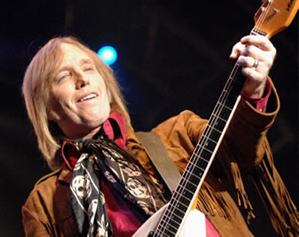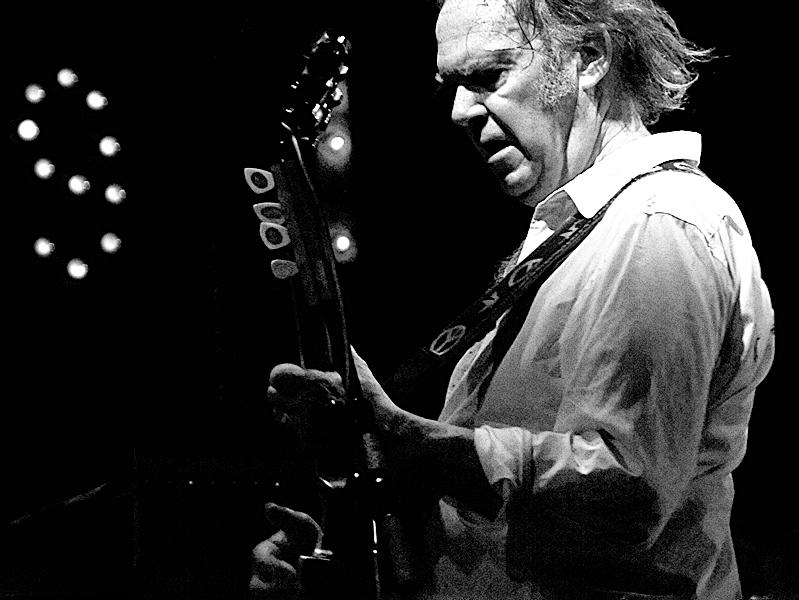Hey Hey, My My!
Why Rock n' Roll just won't quit
April 30, 2015
The age of Rock n’ Roll has brought tribulations, successes and an appreciation for the people who help us “soothe our souls.” Names like McCartney, Petty, and Presley have been instilled in the minds of many as top-tier artists who will never be forgotten. Although the music world of today is forever different than the Rock n’ Roll decades of the 1950s, rock is still alive and well, and going strong today.
The 1950s
The 1950s brought an era of new. The war was won, families were settling down, and
rock and roll was born out of the restless and angsty energy of America’s youth. Teens felt locked down in a country of post-war dust, and Elvis’s hip-swinging controversy and refreshing rhythms brought saving grace to those looking for a revolution. Rock became a venue in which kids could thrive and bring back a smile after a tough decade for everyone. It brought a cause and a passion for a nation that had been bursting at the seams musically for an artistic outbreak. Repetition flooded the streets with standards playing over and over on the radio, and younger audiences just didn’t have the same appreciation for the big-band sound that their parents did. It was controversial. It was wild. Parents banned the music from their homes; Elvis was even filmed above the waist. Yet the more teens were pushed away from rock, the more they wanted it. Hectic times in America inspired hectic music. Rooted in the blues, rock and roll stormed the nation with a wave of artists who could step up to the plate as pioneers in the music industry. Rocking in simple beats and steady chord progressions, a base for the dynamic genre was created, and the seed for a revolution was planted for the next generation to take the controversy a step further. Ready or not, here came the 1960s.

The 1960s
The ‘60s were a time when artists didn’t fully know what they were getting into when they signed with a label; often the musicians were ready to take most any deal they could get and didn’t bother reading the small print details. The ‘60s also brought upon a new wave of rock diversity. From progressive to surf, Rock ‘n Roll was alive and well in the 1960s. A part of the British Invasion, The Beatles’s emergence from England had America rocking when they first appeared on “The Ed Sullivan Show” in 1964. The Rolling Stones, The Animals, and The Who followed shortly thereafter, as America was now ensconced in great music. Festivals like Woodstock brought the limelight on phenomenal musicians in rock and psychedelic music rooted in blues, bringing rise to greats like Janis Joplin, Jimi Hendrix, and Santana. The rise of the Vietnam War gave way to hometown music as well. Buffalo Springfield, a band consisting of future rocker and anger-driven singer Neil Young, displayed their frustrations with the United States’ involvement in the war and the intolerance in the nation. As the decade progressed, emotions poured into songs, as a war that many U.S. citizens wondered why we were still fighting left frustration and hatred moving into the ‘70s. “It ain’t me, I ain’t no fortunate son,” rang through the heads of Americans in 1969, touching on the unfairness the war presented to many innocent Americans who were affected by the unnecessary fighting in the jungle.
The 1970s
Well, rock survived the 1960s. Maybe with a little memory loss and a dive into the psychedelic niche, but hey, what’s rock without a little chaos? As the rock scene became more of a serious and commercial endeavor, the 1970s brought a generation of players that had immersed themselves in the craze since they were kids. With that seriousness came a more systematic approach to the industry, with major battles ensuing financially for artists trying to make a living as names popped up like wildflowers, making the charts more and more competitive. Tom Petty fought the record companies legally tooth and nail in working to keep the art alive. Rock ‘n Roll could very well have become a sold-out passion to big corporations, but the legacy survived from that same ‘50s rebellious root that held strong and continued to build with an explosion of classic albums from big names bleeding in from the prior decades, as well as new names to come with more than a record’s worth to say. Zeppelin, Pink Floyd. Zappa, Costello, and countless others hit the scene hard while the country was changing rapidly. The ‘60s were considered a lost cause for many young Americans, and people were left with a hopelessness and longing to live more for themselves. Disco and funk were wildly popular and began to give the rock fan a hesitant nerve that the art might be killed. To no avail came the parachute pants and pop craze: The 1980s.

The 1980s
Those brave enough to venture into the 1980s faced an abstract period in music. Rock artists were forced to adapt to a pop-saturated market or risk selling their art for what it was in a low-quality time commercially (sound familiar?). Artists like Queen, David Bowie, Dire Straits, and The Police stepped up to the plate and swung hard. The era was plastered with individuality and uniqueness, evolving from the 1970s and the independence it ensued. Bands were making or breaking in extreme fashion, and leaving bold statements along the way. Artists like Devo were recording tracks that were paving new roads altogether musically. With the digital age, electronic music was coming fast, and rock fans were left with a wide variety of mostly sub-par music to follow. Some went to the big-hair bands and the artificial yet marketable Pat Benatars and Madonnas; others went to cult-following bands like Rush to survive the ‘80s with a lending hand. Others dove into the strange and beautifully weird world of David Bowie and Freddie Mercury that rooted itself in rock/pop music that simply left the country in fantastic awe. But when the late 1980s hit, pure rock was slamming back into the picture, and the young faces behind the movement refused to let it die out as the ‘90s snapped us out of our pop garbage-infused dazes. For 10 years, listeners waited in a time of Barbie-doll chart-toppers and synthetic beats; 10 years in waiting with looks selling and shallow pop music filling the country with glorified artificial noises softly taking over. Grunge was here. Thank God, grunge was here.

The 1990s
After a rough decade of supposed “poser rock and roll,” a band out of southern California started their roots in the early ‘90s. The Red Hot Chili Peppers, led by lead singer Anthony Kiedis, started gaining popularity after their hit album “Blood Sugar Sex Magik” made headlines in 1991. With a more funkish type of rock, the Chili Peppers drew fans from all around the world, as they toured overseas to share their musical talents, showing off their late ‘90s album “Californication.” Other great rock bands of the ‘90s included Kurt Cobain’s Nirvana, illustrating his personal struggles in his songs, such as drug addiction and alcoholism. The rock world took a tough hit in April 1994, as Cobain committed suicide, leading to the death of Nirvana. Dave Grohl, Nirvana’s lead drummer, wanted to keep his musical talents alive, as he formed the Foo Fighters to be the lead singer. Rock of the ‘90s was alive and well, as other bands such as Weezer, Green Day and Pearl Jam came to their roots. In a decade haunted by poser rock, it looked like the ‘80s would steer music in the wrong direction, but the ‘90s came back with a bang.

The 2000s
With the advent of impassioned ska progressions and grunge-punk saturated markets came a softer period in music — the 2000s. Female artists were starting to gain momentum as respect and open-mindedness grew culturally, and the music industry was no exception. Sheryl Crow and Avril Lavigne topped the charts and caught America’s attention; the business was changing dramatically with pop punk on the rise, and bands like Weezer, Third Eye Blind, and Blink 182 were the face of a pop punk surge throughout the country. The music was less exuberant and more shallow, as the 2000s quietly progressed.

Neil Young, who recently appeared on “The Colbert Report,” performed a newly released song to the crowd’s enjoyment. Still on tour and going strong, Young still represents the rebellious spirit that held strong in the ‘60s and ‘70s. It’s true, it’s heartfelt, it’s Rock n Roll.
All images courtesy of Google non-commercial use photos.

